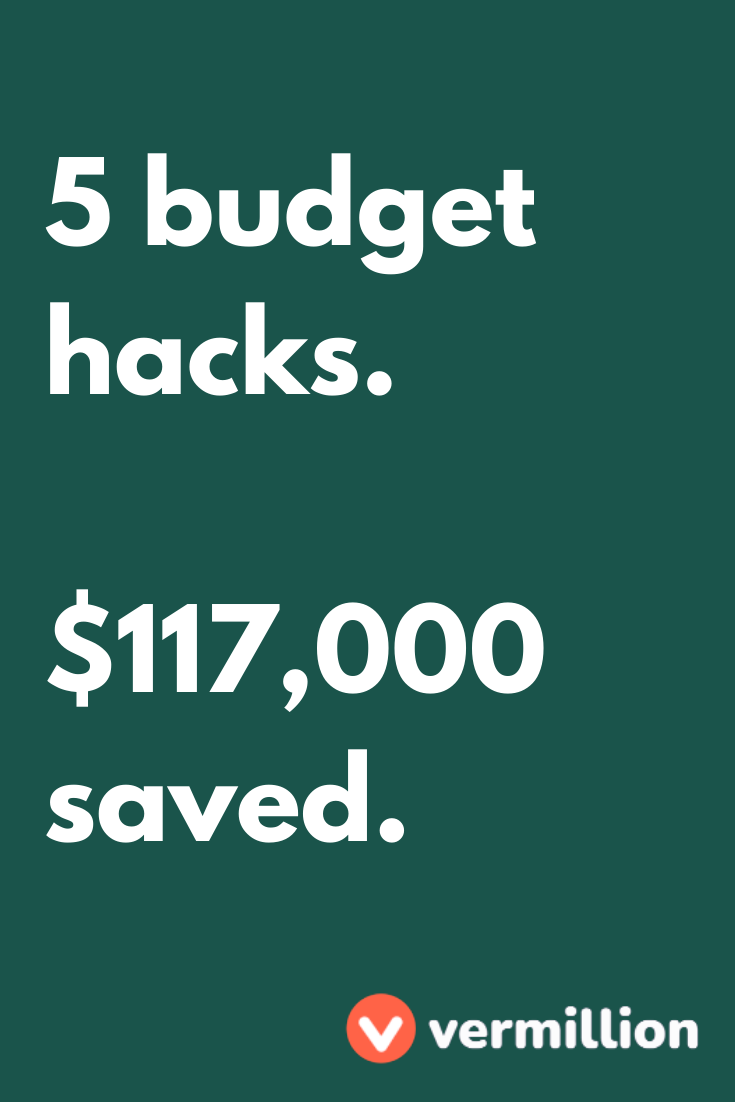Why You Shouldn't Trick Yourself Into Saving


We’re fortunate to earn money when you click on links to products or services we already know and love. This helps support the blog and allows us to continue to release free content. Read our full disclosure here.
We all want saving to be easy.
Headlines promise us quick fixes and simple solutions to what really amounts to a fundamental issue:
We don’t know how to manage our money.
So we click the headlines. We try the tricks. We give up after a few months. And we’re right back where we started.
These “tricks” include a whole host of tactics:
- Save every $5 bill you come across.
- Round up every purchase and save the difference.
- Automate $20 from each paycheck to be paid into a separate account.
- Give all your money to your friend for “safe keeping”.
- Save $1 on day 1, $2 on day 2, etc. for 52 weeks.
On the surface they sound fun – easy. But a “hack” is almost by definition a cheat code. If you're playing with cheat codes, are you really learning the game?
Let’s go over the different types of tricks and what to do instead.
Hide And Seek
A common parable for saving more money involves stashing money away where you can’t see it. If you can’t see it, you can’t spend it.
Sometimes that means hiding it with a friend.
I’ll admit, I let my friends do this – they’ll send me windfalls and tax refunds because they don’t trust themselves not to spend the money. I call it the Bank of Rebecca and I even offer them a piddly interest rate to encourage them to save more - which comes out of my own pocket, of course. And when they want to make a withdrawal, I simply give them the money back.
But the reality is, they’re not really learning to manage their money. Instead, they’re simply hiding it – which is not the same thing. As soon as they get the money back, they spend it. And the money they don’t give me is usually frittered away.
Choosing one friend at random, I can see how successful this strategy has been.
In the 11 years I’ve offered this option, he’s saved up a total of $1,098.21. He’s put more in, but it inevitably gets withdrawn to handle some crisis or another.
In effect, hiding his money doesn’t work. It serves as a nice emergency fund, but it will continue to get wiped out as long as it stays so small.
Automatic Withdrawals
Similarly, I set up automatic contributions to my retirement fund when I created it. At first it was $15, then $30 – now I’m up to $400. This effectively “hides” my money by taking it out of my paycheck before I get it.
This can be a great way to dip your toes into saving more without too much effort, but it won’t maximize your savings. Although I’ve never had to withdraw the money for any kind of emergency (yet), it’s certainly not the most effective tool in my arsenal.
What to do instead
So how do you build impulse control when you just love to spend?
- Use a budget category to set money aside.
- Invest it.
With a budget category, you can still “hide” the money from yourself, while still keeping tabs on it. Keeping it visible will make it very tempting to spend it – but it will also make it easier to add funds! The goal is to learn to manage it over time.
At the end of the month, you can still sweep the money into an investment account, where it will keep growing. Investing what you can will keep your bank balance small (to resist temptation), while giving you something to “spend” on.
Keep The Change
Rounding up each purchase and saving the difference sounds great in theory – every time you spend, you save!
But in reality it reinforces your spending habits and leaves you with little savings to show for it. For example, I’ve had Bank of America’s “Keep The Change” active on my account for almost 11 years. Do you want to guess how much I’ve saved in all that time?
…$219.34. Over 11 years.
This is because I don’t spend money very often. Instead, I focus on not spending money as a way to save more. Classic, right?
What to do instead
How should you set money aside if you only feel capable of saving cents on the dollar?
- Track your spending - try to spend less.
- [Pay yourself first, last, and in-between.] “first-last-in-between.md”
Instead of spending more to save more, take a look at lowering your expenses and make an effort to move the difference into savings. It will be well worth it.
Game On
The 52-Week challenge, the $5 bill challenge… There are countless games to get you motivated to save more.
But unfortunately if these challenges seem doable – They probably don’t go far enough.
They might force you to think about how you’re going to scrape together $50 in a few months, but they don’t do a whole lot in the short-term. In fact, most people start off great (saving $1 or $2), but they often drop out of the challenge before they see any real savings.
Rather than promising yourself that you’ll take a hard look at your finances at the end of the year when things ramp up – just do yourself a favor and look at them now. You might be able to save $10 every week and be better off in a few months when you inevitably fall off the bandwagon.
Motivation is hard to maintain, so it’s important to make the most of it. To get the most bucks for your bang, commit to more than $1 a week – commit to a lot, whatever that means for you. Even if you fall short, you’ll save more.
What to do instead
Do I even need to say it?
- Make a budget.
- Bonus: Use a visual tracker to motivate your savings.
To know how much you can really save, you need to know how much you’re spending.
Once you start planning and tracking your expenses, you can make a game out of spending less - and pocket the difference! This strategy will be much more effective than any arbitrary “money challenge” you find on the internet, because it will be unique to you!
To jazz it up, consider using a printable to track how much you’re saving, like our Polyonimo Tracker Sheet. Just substitute a savings goal for debt and start building your fun shapes - the wackier the better!
The Hack That Works
By trying every method under the sun, I’ve found one strategy that supercharges my savings: Zero-Sum Budgeting.
This is exactly how Vermillion was designed to work, because I wanted to share precisely what has helped me save over $100,000 in the last 11 years. The breakdown looks like this:
- $50,000 into retirement funds
- $30,000 as a downpayment on my home
- $37,000 in additional savings
This isn’t counting any employer match, any investment growth, increasing equity in my home, or any appreciation of assets. This is 100% my own cold, hard contributions. Directly from my paychecks and into savings.
How does it work?
- When you earn money, budget it.
- When you spend money, record it.
- Balance things as you go, and you’ll save as much as possible.
It’s really that simple.
In Conclusion: Be Thoughtful, Not Deceitful
At the end of the day, if a fun trick or game piques your interest – that’s great! Just know that it’s not going to get you all the way to your maximum savings rate.
To do that, you’ll need to exercise a more thoughtful approach - usually involving budgets or tracking expenses.
Here are some fun strategies that are sometimes listed as “hacks” – but are actually tried-and-true methods that stand the test of time! These tips are usually trotted out as “tricks”, but are actually great ways to reflect and learn about your money habits.
- Institute a “waiting period” before big purchases.
- Ask questions, such as: “Did I need this yesterday?”
- Keep a change jar.
- Save your annual raise.
- Post visual reminders of your goals.
Do you have any tricks, hacks, or thought-out strategies to share? Let us know in the comments!
Related Posts

The Diderot Effect: What It Is And How To Avoid It

13 Financial Self-Care Tasks





